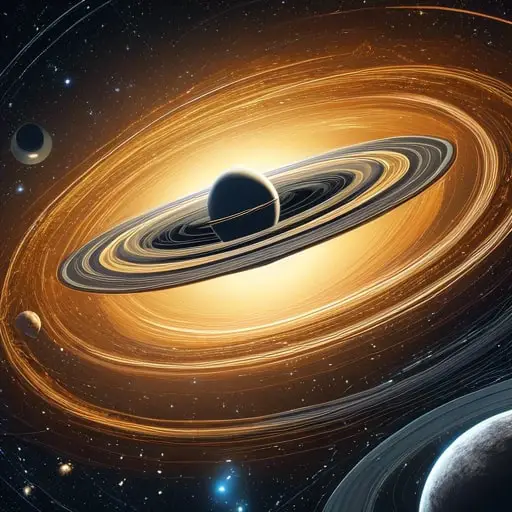How Long Would It Take To Get To Pluto?
Embarking on a journey to reach Pluto, the distant and enigmatic celestial body, is no small feat. You may be curious to know just how long it would take to arrive at this distant realm, but the answer is not as straightforward as it may seem.
With the current technology at our disposal and the challenges that come with venturing into the unknown, the path to Pluto is filled with intriguing possibilities and lingering questions.
So, buckle up and prepare to explore the intricacies of interplanetary travel, for the answer lies beyond the horizon, waiting to be uncovered.
Key Takeaways
- Distance between Earth and Pluto is approximately 3.67 billion miles.
- The time it takes to reach Pluto is approximately 9 years.
- Current spacecraft, like the New Horizons, have achieved a maximum speed of approximately 36,000 miles per hour.
- Factors such as celestial body alignment and spacecraft velocity influence the duration of travel to Pluto.
Distance Between Earth and Pluto
The distance between Earth and Pluto is approximately 3.67 billion miles, making it one of the most distant objects in our solar system.
To put it into perspective, if you were to travel at the speed of light, which is about 186,282 miles per second, it would still take you over 4 hours to reach Pluto.
However, current spacecraft technology limits our travel speed to around 36,000 miles per hour. At this speed, it would take us approximately 9 years to reach Pluto.
This vast distance poses significant challenges for space exploration missions, as it requires careful planning and precise calculations to ensure the success of such extensive journeys.
Despite the immense distance, the desire to explore and belong to the broader cosmic community drives us to push the boundaries of our knowledge and reach out to distant worlds like Pluto.
Speed of Current Spacecraft
With the vast distance between Earth and Pluto, it becomes crucial to consider the speed of current spacecraft in order to determine the feasibility and duration of a journey to this distant celestial body.
Currently, the New Horizons spacecraft holds the record for the fastest spacecraft ever launched from Earth. It achieved a maximum speed of approximately 36,000 miles per hour (58,000 kilometers per hour) during its journey to Pluto.
This speed allowed New Horizons to cover a distance of about 3 billion miles (4.9 billion kilometers) in just under 9 and a half years.
However, advancements in propulsion systems and spacecraft design are continuously being made, which could potentially increase the speed of future spacecraft and reduce the travel time to Pluto even further.
It’s an exciting time for space exploration as we continue to push the boundaries of our technological capabilities and venture further into the mysteries of our solar system.
Time It Takes to Reach the Moon
Spacecraft can reach the Moon in approximately three days. This journey, spanning a distance of about 384,400 kilometers, is made possible by the propulsion systems onboard the spacecraft.
To achieve this feat, spacecraft utilize powerful engines that generate enough thrust to overcome Earth’s gravitational pull. The spacecraft’s trajectory is carefully calculated to take advantage of gravitational assists from the Moon and Earth, optimizing the efficiency of the journey.
Various factors, such as the alignment of celestial bodies and the spacecraft’s velocity, influence the duration of the trip. Modern technology and advancements in spacecraft design have significantly reduced the time it takes to reach the Moon compared to early space missions.
This achievement showcases humanity’s ability to explore and expand our reach in the vastness of space.
Time It Takes to Reach Mars
After successfully navigating the journey to the Moon, the next challenge lies in determining the travel time required to reach Mars. As you embark on this quest, it’s important to understand the complexities involved in interplanetary travel.
Here are some key factors to consider:
- Distance: Mars is approximately 225 million kilometers away from Earth, making it the second closest planet to our home.
- Orbital alignment: The travel time greatly depends on the alignment of Earth and Mars in their respective orbits. This alignment occurs roughly every 26 months, providing an optimal launch window.
- Propulsion technology: The efficiency of propulsion systems, such as chemical rockets or advanced ion engines, plays a crucial role in reducing travel time.
- Mission duration: A typical journey to Mars can last anywhere from 6 to 9 months, depending on the aforementioned factors.
Challenges of Long-Duration Space Travel
Long-duration space travel presents numerous challenges that must be meticulously addressed in order to ensure the safety and well-being of astronauts.
One of the major challenges is the physiological impact of extended periods of weightlessness. Prolonged exposure to microgravity can lead to muscle and bone loss, cardiovascular deconditioning, and changes in the immune system.
Additionally, the isolation and confinement experienced during long-duration missions can have negative psychological effects on astronauts, such as depression, anxiety, and sleep disturbances.
Another challenge is the need for a reliable and sustainable life support system that can provide astronauts with air, water, and food for the duration of the mission.
Furthermore, the long distances involved in space travel necessitate advanced propulsion systems and technologies to ensure timely arrival at the destination.
Addressing these challenges requires collaborative efforts from scientists, engineers, and medical professionals to develop innovative solutions that will enable safe and successful long-duration space travel.
Propulsion Systems for Interplanetary Travel
To address the challenges of long-duration space travel, a key consideration is the development of advanced propulsion systems capable of facilitating interplanetary travel. Here are some propulsion systems that are currently being explored:
- Ion propulsion: This system uses electric fields to accelerate ions, providing a high exhaust velocity and fuel efficiency. It’s ideal for long-duration missions but requires a large power source.
- Nuclear propulsion: By utilizing nuclear reactions, this system can generate high thrust and achieve faster travel times. However, safety concerns and regulatory issues need to be addressed.
- Solar sails: These utilize sunlight to propel spacecraft by reflecting photons. While they offer unlimited propellant, they provide small accelerations and are better suited for longer missions.
- Plasma propulsion: By using electromagnetic fields to ionize and accelerate plasma, this system achieves high exhaust velocities. It offers good efficiency but requires a sizeable power supply.
Developing these advanced propulsion systems won’t only shorten travel times to distant planets but also open up new possibilities for human exploration and scientific research in the vastness of space.
Estimated Time to Reach Pluto Using Current Technology
Using current technology, it would take approximately 9.5 years to reach Pluto from Earth. This estimate is based on the most efficient propulsion systems available today, such as ion engines and gravity assists.
These methods allow spacecraft to gradually accelerate and gain momentum over long periods of time. The journey to Pluto is a staggering 3.67 billion miles, and the average speed required to cover this distance within 9.5 years is approximately 38,632 miles per hour.
Achieving such speeds requires careful planning and precise calculations to maximize fuel efficiency and minimize travel time. While this estimate may seem lengthy, it’s important to remember that space exploration is a complex endeavor that requires immense dedication and patience.
As technology continues to advance, future missions to Pluto may be accomplished in shorter timeframes.
Frequently Asked Questions
How Long Would It Take for a Human to Travel to Pluto Using Current Technology?
With current technology, it would take you a considerable amount of time to travel to Pluto. The distance is vast, and the speed at which spacecrafts can travel limits the duration of the journey.
What Are the Risks Associated With Long-Duration Space Travel to Pluto?
To understand the risks of long-duration space travel to Pluto, you must first consider the effects of radiation exposure, bone loss, muscle atrophy, and mental health challenges that astronauts would face.
How Far Is Pluto From the Nearest Known Star System?
Pluto is located within our solar system, so it is not part of a separate star system. Therefore, it is not possible to measure the distance between Pluto and the nearest known star system.
Can We Use the Same Propulsion Systems for Interplanetary Travel to Reach Pluto?
Can you use the same propulsion systems for interplanetary travel to reach Pluto? Well, my friend, let me enlighten you with the scientific precision you crave. The answer is a resounding yes!
Are There Any Plans to Send a Manned Mission to Pluto in the Future?
There are currently no plans to send a manned mission to Pluto in the future. However, advancements in technology and space exploration could lead to potential missions beyond our solar system.
Conclusion
Congratulations! You have successfully embarked on a scientific journey exploring the time it would take to reach Pluto using current technology.
While the distance between Earth and Pluto is vast, and the challenges of long-duration space travel are numerous, our current propulsion systems show promise for interplanetary travel.
However, it’s important to remember that reaching Pluto isn’t a mere walk in the park. So, buckle up and prepare for a cosmic adventure of epic proportions!









